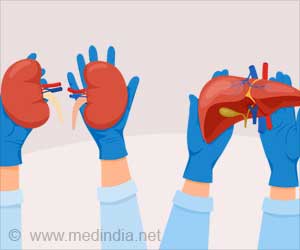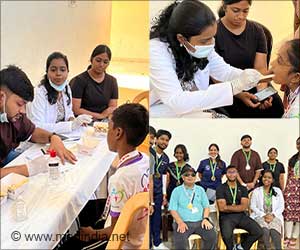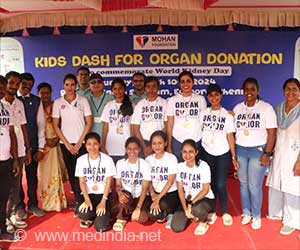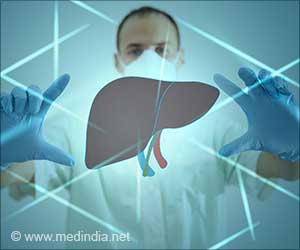Bellybutton surgery means quicker recovery after organ donation, say Cleveland researchers. It reduces recovery time and leave almost no scarring.
"The actual incision point on me is so tiny, I'm not getting any pain from it," said Kaster, 29. "I can't even see it."Kaster was the 10th donor at the Cleveland research hospital to undergo the procedure.
The new procedure could make living kidney donations more palatable by sharply reducing recovery time, Dr. Inderbir Gill and colleagues at the Cleveland Research Hospital.
The technique takes advantage of the bellybutton to avoid a visible scar. Gill said the procedure was approved by the clinic's internal review board as an extension of its laparoscopic surgical work. He has begun training other surgeons in the procedure. It is not used to transplant the kidney into the receiving patient.
The procedure involves making a two-centimetre incision in the interior of the bellybutton and inserting a tube-like port with several round entry points for inserting a camera and other tools into the abdomen.
The belly is inflated with carbon dioxide to provide manoeuvring room. The kidney is then freed from connecting tissue, wrapped in a plastic bag and removed through the navel when the blood supply is cut, shrinking the organ's fist-like size. The incision is expanded to about four centimetres to extract the kidney after the port is removed.
Advertisement
The first 10 recipients and donors whose transplants used the single-incision navel procedure have done well, say the researchers, who report on the first four patients in the August issue of the Journal of Urology.
Advertisement
The clinic says the return-to-work time for single-point donors is about 17 days, versus 51 days for traditional multi-incision laparoscopic surgery.
"For me, that's huge, so I can get back to work," said Kaster, a self-employed optometrist, news agency AP reports.
Patients who had the new procedure were on pain pills less than four days on average, compared with 26 days for laparoscopy patients. "This represents an advance for the field of surgery in general," said Gill, who predicts the bellybutton entry will be used increasingly for major abdominal surgery in a "nearly scar-free" way.
"Will this decrease the disincentive to [kidney] donation? I think the answer is yes," Gill said.
Drs. Paul Curcillo and Stephanie King of Drexel University College of Medicine in Philadelphia developed a single-incision technique and Curcillo was the first to use the method to remove a woman's gallbladder through her bellybutton in May 2007. They've since used it for a number of different kinds of surgery.
Curcillo said the bellybutton procedure "will definitely make things better" for the donor.
"A donor is one of the most altruistic people you'll ever meet — he's giving his kidney up," he said. "So anything you can do to make it better for that patient, they deserve it."
In August last year it was reported that surgeons specializing in laparoscopic procedures at UT Southwestern Medical Center, Texas successfully removed a patient’s kidney by performing a unique nephrectomy entirely through the belly button.
Dr. Jeffrey Cadeddu, associate professor of urology and radiology, performed the “single keyhole access” surgery, the first of its kind involving a kidney.
“Laparoscopic surgery already gives patients smaller incisions, less pain and a faster recovery. This transumbilical technique is a further extension of laparoscopic surgery, which essentially removes scarring from the patient’s skin.”
Dr. Cadeddu performed the surgery with a newly developed set of high-dexterity instrumentation known as RealHand, manufactured by Novare Surgical Systems. The instruments enable surgeons to perform more difficult maneuvers that otherwise could not be completed. The high-dexterity instruments make it easy to manipulate and complete tasks regardless of whether the appliance is positioned over, under or around internal organs.
Dr. Cadeddu said he believes the success of this new laparoscopic procedure and others like it are imperative as more physicians explore their options concerning natural orifice surgery.
Source-Medindia
GPL/M







